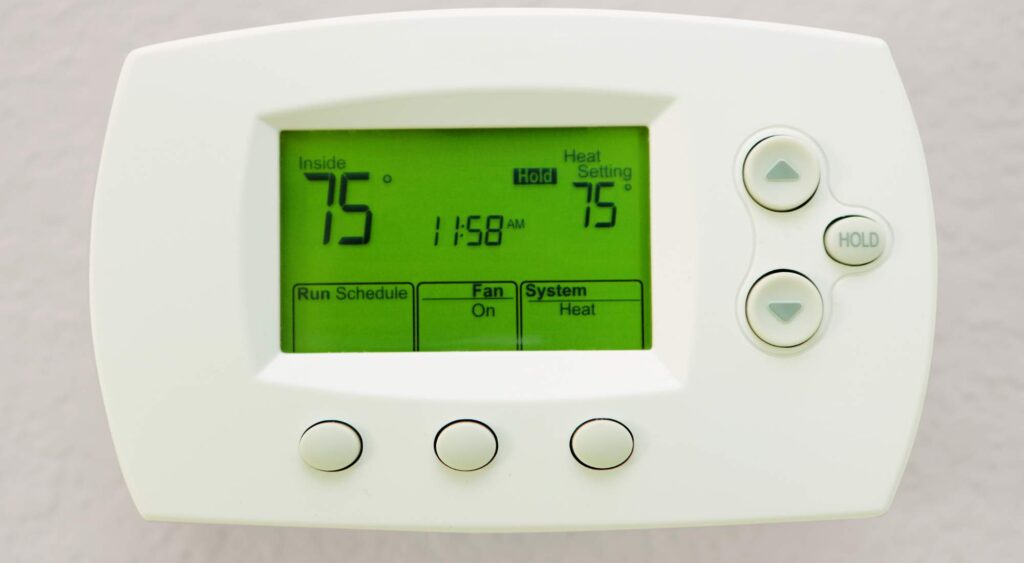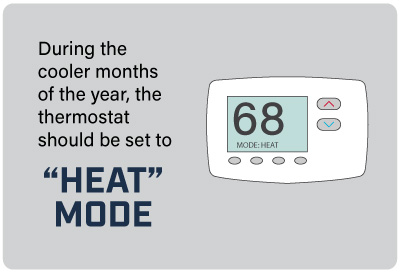
Some heating equipment uses a fan to distribute warm air throughout a home. When the fan continuously blows, you might wonder, “Why is my heat running constantly?” If it seems like your heating system is working overtime to keep your home’s temperature comfortable during the cool months of the year, a bit of troubleshooting is in order.
We’ll fill you in on some of the most common causes of this problem and let you know how to get in touch with us so we can fix your issues.
Table of Contents
- 10 Common Causes and Solutions for a Continuously Running Heater
- Why Isn’t My Heater Working? When To Call an HVAC Professional
- Trust AAA Heating and Cooling for Your Furnace Repair Services
10 Common Causes and Solutions for a Continuously Running Heater
If your heating system is working too hard and running constantly, chances are high that one or more of the following issues could be the cause. You can try troubleshooting these problems yourself if it’s something simple, but a more complicated issue could require the help of a professional. If you are looking for a capable, trustworthy HVAC repair service, reach out to AAA Heating and Cooling today.
#1: Incorrect Thermostat Temperature Settings
When you set the thermostat to “Auto,” the heating equipment’s fan should only blow during the heating cycle. If the fan doesn’t stop running, check the thermostat’s settings. During the cooler months of the year, the thermostat should be set to “Heat” mode.
Once you confirm that it is in “Heat” mode, check the temperature settings. It should be warmer than the outside temperature, but not too warm. Try lowering the thermostat’s temperature setting so it’s cooler than the current room temperature.
For example, if the thermostat is set to 75°F and the room temperature is 68°F, lower the thermostat to 65°F. Within a few minutes, the heating equipment should shut down, causing the fan to stop blowing.
If lowering the temperature causes the fan to stop running, the thermostat’s temperature was likely set too high. As a result, the heater worked hard to reach a higher temperature.
#2: Incorrect Thermostat Fan Setting
In general, fans on thermostats have two settings: on and auto. If your thermostat’s fan setting is set to “On,” the fan will run all the time, even if the heating equipment isn’t warming your home. Other fan settings that may cause the device to constantly run include “Manual,” “Low,” “Medium,” and “High.”
The solution is to simply switch the fan setting to “Auto.”
#3: Faulty Thermostat
Your thermostat may be to blame for the heater continuously running. This could be from:
- A broken switch
- A broken heating sensor; or
- Bad wiring
The older your thermostat is, the more likely that it’s the cause of your problem. Fortunately, this is an easy fix. The pros at AAA Heating and Cooling can easily replace your thermostat — and not only that, they can equip you with up-to-date energy-efficient technologies that will help you save on your monthly utility bills.
#4: Damaged Primary Controller
If the thermostat isn’t the issue, it may be the heating unit itself. The primary controller dictates when the unit turns on and off. If it’s not working properly, it can no longer control this, and your heater may run continuously. Your primary controller will need to be replaced by a professional.
#5: Limit Switch Problems
If adjusting the thermostat’s temperature and fan settings doesn’t work, there might be a problem with the equipment’s limit switch. A limit switch’s job is to tell the blower when to turn off and on. In a furnace, you’ll find this switch under its hood.
After locating the fan limit switch, check if it’s set to “On” or “Manual Override.” On some models, the limit switch unit has a button you depress to set it to the “On” or “Manual Override” setting. These settings will cause the fan to continuously blow.
If the button is depressed, pull it out. This action will reset the limit switch to “Auto” so the fan only blows when the furnace heats your home. Check your heating equipment’s user manual to locate and identify the limit switch and familiarize yourself with its operation.
#6: Lack of Weatherization
If your home isn’t weatherized sufficiently, cold air may enter your home while warm air escapes. This may occur around:
- Windows
- Exterior doors
- Electrical receptacles and light switches along exterior walls
- Recessed lighting units
- Cracks along exterior walls
- The attic
- Ventilation ducts
- Chimneys
Weatherizing your home and improving its insulation will help your heating system run more efficiently when it is set correctly.
#7: Dirty Air Filters
Dirty filters are a common reason for HVAC systems running inefficiently. Furnace filters collect debris that can restrict airflow and cause overheating. When your HVAC system overheats, the fan has to work overtime and run constantly to help cool everything down.
Air filters should be replaced at least every few months so heat can flow properly and the system won’t be overloaded. If you notice that your filters are particularly dirty when you change them, you may want to replace them every month or two instead.
#8: Dirty Ducts and Registers
Dirty air ducts cause the same types of problems as dirty filters — they get clogged and don’t allow for proper airflow, causing the unit to run for prolonged periods. Your ducts should be cleaned about once a year to avoid build-up. This is also a great time for your HVAC technician to inspect the ductwork for leaks or breaks that could cause further issues.
You should also check all the air registers in your home frequently to ensure that they aren’t clogged with debris or blocked in some way. Just one clogged register can lead to a static pressure buildup that could damage your HVAC system. Registers can easily be cleaned with a vacuum attachment and wiped with a damp cloth.
#9: Improperly Sized Ducts
The ducts in your home could be decades old in some cases, and they may not be the right size to keep up with modern HVAC systems. If the ducts aren’t sized to match the unit, they may not be able to heat your home efficiently, leading to the heater running more than it should.
#10: Rodent Damage
If you have an issue with mice or rats getting into your home, they may enter the HVAC unit and chew up the wiring. Damaged wiring can cause the system to run constantly, especially if it occurs close to where the thermostat wire enters the unit. If this happens, call a pest control professional to get rid of the rodents, and then let an HVAC specialist repair and replace your wiring.
Why Isn’t My Heater Working Properly? When To Call a Portland HVAC Professional
If you can’t remedy a heater that is always running on your own, it’s best to call a Portland home furnace service like AAA Heating and Cooling. Hiring a specialist will help solve your heating problems faster and prevent voiding an active warranty by accident.
Trust AAA Heating and Cooling for Your Furnace Repair Services
We’ve been providing residential furnace services for customers in the Pacific Northwest for over three decades, and we know we can help you with your continuously running heater. Whether it’s troubleshooting your issues, making repairs, or replacing an HVAC system that is past its prime, we will take care of you and make sure your home is warm and cozy all winter — without a constantly running heater to drive up your bills.
As your Portland HVAC consultant, AAA Heating and Cooling promises to take the time to understand your concerns regarding the comfort, health, and safety of your commercial or residential space. It’s our mission to provide reliable, high-quality products and services to residential and commercial clients in Portland. As the premier heating and cooling contractor in the region, we are committed to keeping your home and business comfortable and climate-controlled while improving your indoor air quality.
If your heat is running constantly or you have any other HVAC issues you’d like to address, contact us today to request an appointment.


